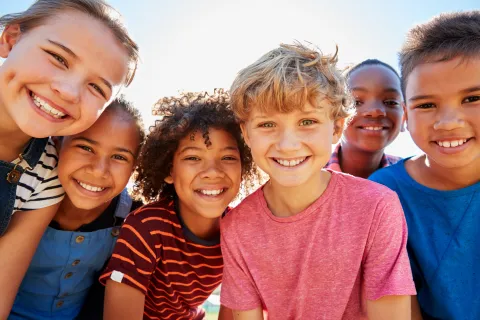Teaching Diversity and Inclusion to Our Children

Racial justice is strangely controversial these days. Funding for research mentioning diversity, equity and inclusion is newly scrutinized and defunded; monuments, military bases and battleships named for military heroes of color recently renamed; and contributions of black and brown soldiers and citizens removed from history books, as if their race makes their achievements and contributions to our society less remarkable.
These changes may have sparked some important and uncomfortable conversations in your home. So how do you react when your children start asking the tough questions? You talk about it.
A Deliberate Effort Needed
Clearly, we have a long way to go in terms of accepting all people as equals no matter their race, sexuality, gender identity, age or ableness. The best way to break the cycle of systemic oppression, discrimination, and prejudice that has permeated our country since its earliest days, is to make a more deliberate effort to teach our children to respect others for their differences before they have a chance to develop conscious and unconscious biases. And those chances come early.
According to healthychildren.org, a website of the American Academy of Pediatrics, babies as young as 6 months old note racial differences, and children can begin to demonstrate racial biases or stereotypes between the ages of 2 and 4. By early adolescence, those biases can be set in their beliefs and reinforced by their surroundings.
Before we can begin teaching our children, we, as adults, must first recognize the privileges that come to some and not others, and that those privileges can create a pathway to opportunities not equally available to everyone. It can be hard to teach about the effects of prejudice and bias when living in a predominantly white culture where examples of injustice aren't evident in the day-to-day lives of all of us. By acknowledging that these prejudices exist and teaching our children that opportunities are often less accessible to someone who is not white, we make a start.
Facing Our Own Biases
As parents, we come from many different backgrounds and experiences and have our own learning to do about the biases we carry, the diversity around us and the privileges some of us take for granted. There is no time like the present to expand our experiences by:
- Seeking interactions outside of our typical friend groups
- Reading more widely (e.g., How to Be an Antiracist by Ibraim X. Kendi)
- Reflecting on our thoughts and behaviors with an eye toward recognizing, challenging and changing the stories we make up about an individual or group based on superficial characteristics or generalizations
- Seeing our own biases and prioritizing an intentional effort to learn more about other cultures
These are part of an ongoing process, as is helping children learn to do the same. If we continue the work of trying to see where we fall back on biased beliefs and we forgive ourselves for our errors (and make amends when needed), we'll be better able to do the same with our kids.
Where to Begin?
- Initiate conversations early and keep them age appropriate.
- Aim for an ongoing dialogue rather than a "one and done" crash course.
- Kids learn from everything around them, and we need to provide guidance along the way by role-modeling, asking questions, pointing out examples of bias, and providing alternate responses. Sometimes, the conversations may feel awkward; that could be a good indicator that the topic is especially important. Embrace it.
When a difficult, important event makes the news, try asking your child:
- What they have heard
- What they understand
- What questions they have
Their responses to these questions can be a good starting point for discussion and can offer a sense of what depth of information your child needs in that moment. Offering the facts of a situation, without generalizing, and focusing on the positive ways people choose to act in difficult situations is the way forward.
Teaching our children about who they are and where they come from, as well as how to respect and appreciate the differences in others is a gradual and evolving process. It starts with us, and it starts early with our children. We need to role model the behaviors we want our children to learn:
- Seek out interactions in the diverse world around you.
- Make conversations about these issues ongoing.
- Lean into your own vulnerabilities.
- Showing your child that you prioritize living a nonbiased life may be the best lesson of all.
Resources:
Talking to Children About Racial Bias
Teaching Children Cultural and Racial Pride
Beyond the Golden Rule: A Parent's Guide to Preventing and Responding to Prejudice
Common Sense Media (games, apps and books with diverse characters)
NPR Life Kit (episodes covering a range of parenting topics including talking about racism)
Guest Blogger: Leah Evans Wong, MEd, MD, pediatrician, UMass Memorial Medical Center - Children's Medical Center
Other related articles by:
children racial injustice | conversations | culture | discrimination | diversity | inclusion | prejudice | racial differences | role modelNote: The content of this blog is for informational purposes only. It is not intended for use as diagnosis or treatment of a health problem or as a substitute for the professional consultation of a physician or qualified health care provider. If you have specific questions or concerns regarding a health or medical condition, contact your physician or a licensed health care professional.

